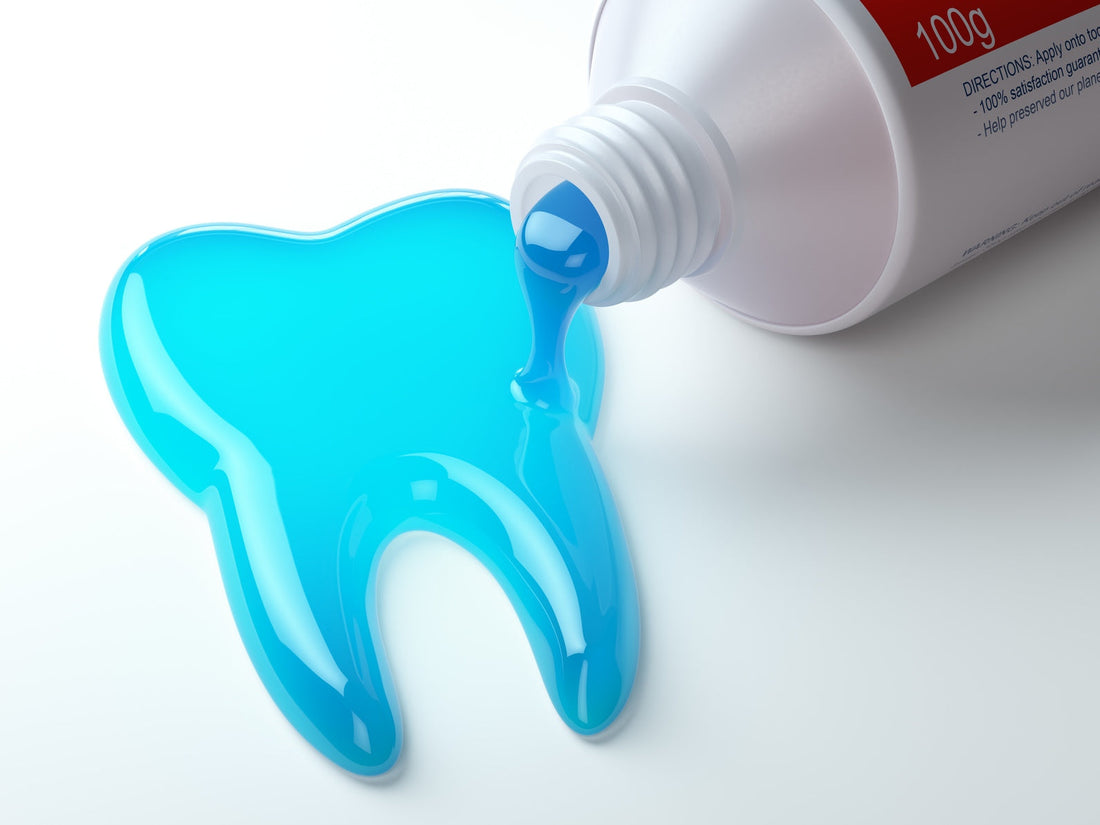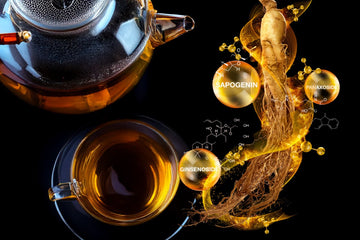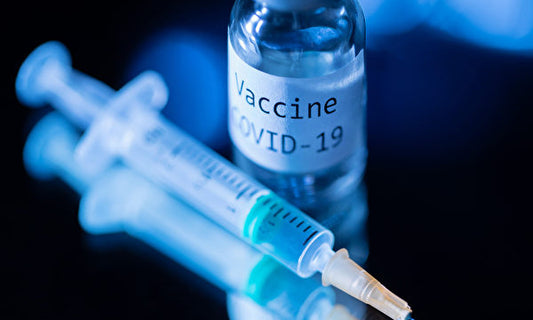Here's what Dentists are NOT telling you about Fluoride - Don't be misled!

You might know Fluoride helps fortify tooth health, but did you know Fluoride poisoning affects about 23% of Americans? That number is even higher in kids aged 12 to 15, at 40.6%. In this article, we’ll disclose how the most common toothpaste ingredient: Fluoride, has some heinous secrets you're not being made aware about. At the end, we'll also mention plant-based alternatives to Fluoride, and how you can start using them today!
The origins of Fluoride
In 1901, Dr. Frederick McKay, a dentist in Colorado Springs, observed that many of his patients had unusual brown stains on their teeth, a condition later named "Colorado brown stain." Surprisingly, these discolored teeth were also highly resistant to tooth decay. Intrigued, McKay began investigating the cause and eventually collaborated with other scientists, including Dr. H. Trendley Dean of the U.S. Public Health Service. By the 1930s, Dean conducted extensive studies and discovered that the condition was linked to high levels of naturally occurring fluoride in the local water supply.
Further research showed that when fluoride was present at around 1 part per million (ppm), it significantly reduced cavities without causing severe staining. This led to the revolutionary idea of adding fluoride to public drinking water as a preventive dental health measure. In 1945, Grand Rapids, Michigan became the first city in the world to fluoridate its water.
The results showed a dramatic decrease in tooth decay among children. This marked the beginning of fluoride’s widespread use in dental care and public health, transforming oral hygiene practices around the world.
Fluoride in modern toothpaste
Walk into any store and pick up a toothpaste. Look on the back, and we'll bet you it'll have abrasives, foaming agents (often Sodium Lauryl Sulfate, or SLS), fluoride, antibacterial agents, flavors, sweeteners, thickeners, colorants, moisturizers, anti-sensitivity agents, and preservatives.
Did you notice? Aside from water (and some minerals), the rest are synthetic chemicals. Of course, while fluoride does naturally occur in small amounts, this fluoride added to toothpaste is often synthetically produced.
Now what’s the Controversy Over Fluoride?
Traditional dentistry touts Fluoride is scientifically proven to help remineralize teeth, prevent demineralization, and reduce cavities. With it in drinking water, most don't think twice about excessive levels of Fluoride. But what they don’t tell you: The danger when you have too much.
Excessive fluoride intake can cause dental and skeletal fluorosis, joint damage, and even neurological issues (World Health Organization). A 2017 study revealed that prenatal exposure to fluoride could negatively affect future cognitive abilities (Environmental Health Perspectives). Researchers measured fluoride levels in 299 pregnant women and their children aged 6 to 12. The results showed that higher fluoride levels were associated with lower IQ scores. In 2014, fluoride was listed as a potential neurotoxin harmful to children's development, alongside substances like lead, arsenic, toluene, and methylmercury (PubMed Central).
According to the International Academy of Oral Medicine and Toxicology (IAOMT), fluoride exposure can cause acne, cardiovascular problems, reproductive issues, thyroid dysfunction, and ADHD (IAOMT Fact Sheet).
A study published on PubMed described fluoride as an "extreme electron scavenger" with an "infinite affinity for calcium," warning that its toxicity has been overlooked for over 70 years (PubMed).
The US Environmental Protection Agency's 2005 Scientific Advisory Board found that perfluorooctanoic acid (PFOA), a component used in nonstick coatings like PTFE, may be carcinogenic. In 2015, DuPont, the only US company producing PFOA, ceased its use.
Fluoride's Alarming Effects on Child Development
While small amounts of fluoride may be harmless, long-term exposure through toothpaste and water can easily lead to accumulation, particularly in developing children.
A 2024 article by the Fluoride Action Network highlighted that toothpaste covering a child’s toothbrush length contains 0.75 to 1.5 mg of fluoride, exceeding most prescription fluoride supplements (0.25 to 1.0 mg). Keep in mind, just 1g of fluoride toothpaste—about one full strip on a toothbrush—is enough to cause acute fluoride toxicity in a two-year-old, resulting in nausea, vomiting, headaches, and diarrhea (Fluoride Action Network). Although dentists recommend using a pea-sized amount of toothpaste for children, kids often use more without supervision, increasing the risk of swallowing.
In 2009, the American Association of Poison Control Centers received over 25,000 calls related to fluoride toothpaste ingestion, and 378 users required emergency treatment (Fluoride Action Network). In adults, fluoride toothpaste can cause perioral dermatitis (a rash around the mouth) and mouth ulcers (Journal of Military Dermatologists).
The takeaway? The risks of using fluoride outweigh the costs, especially for young children.
Not to mention the Problem with SLS and Other Additives
Sodium Lauryl Sulfate (SLS) is a surfactant used in most toothpaste and shampoos due to its low cost. However, studies indicate that SLS can trigger allergic reactions. In a study of 1,600 patients, 668 (41.8%) experienced irritation from SLS, with 41 showing reactions of severity greater than 2+ (Wiley Online Library).
Other ingredients such as parabens and benzyl alcohol can cause allergies, disrupt hormones, or pose carcinogenic risks (ScienceDirect). Cleaners like hydrogen peroxide and activated charcoal can damage enamel (MouthHealthy).
How Unitein Toothpaste is changing the game
Unitein is formulated with 99% of natural plant-based ingredients. This includes calcium carbonate as an abrasive, sorbitol as a natural sweetener and thickener, vegan-glycerin as a moisturizer, and peppermint oil for freshness. It’s also infused with extracts of calendula, chamomile, Scutellaria baicalensis (Chinese skullcap), grape seed, and green tea.
Most importantly, Unitein Toothpaste has no fluoride, SLS, chemical preservatives, artificial flavors, triclosan, or saccharin. This makes it an ideal choice for anyone, especially young children and Alzheimer's patients, who may accidentally swallow toothpaste.
What to remember from all this
Next time you shop, choose a toothpaste without Fluoride. Better yet, choose one made with safe, plant-based alternatives that also strengthen teeth and gum health just as well—it’s a conscious move toward protecting both your oral health and your whole-body health.
Remember: gum health isn’t just about avoiding cavities—it’s a critical part of maintaining your overall well-being. Yet many mainstream toothpastes are filled with synthetic chemicals like fluoride, SLS, and artificial additives that may do more harm than good over time. With increasing research linking these ingredients to a range of health risks—from neurological issues to hormonal disruption—it’s no surprise that more people are turning to natural alternatives.
暫無評論








0條評論